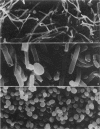Abstract
The effects of miconazole and its new derivative ketoconazole on Candida albicans have been evaluated by light and electron microscopy. The growth characteristics and morphology of C. albicans in culture for various periods of time in a solution consisting of Eagle's minimum essential medium supplemented with amino acids and fetal calf serum are emphasized. This medium, normally used for culturing mammalian cells, promotes a rather fast growth of C. albicans and favours the development of pseudomycelium. The obvious interest in using such culture conditions for drug evaluation is the prevalence of pseudomycelium, which in vivo is the predominant pathological form of C. albicans. Suppression of pseudomycelium formation is found in the 10-9 to 10-7 M concentration range of the imidazoles. Growth retardation and the destruction of both yeast and pseudomycelial forms brought about by incubating the cells with 10-9 to 10-4 M of the drugs are reported. At low doses these changes include the alteration of cell division, an increase in cell volume and a progressive deterioration of subcellular organelles at the cell periphery. At higher doses the involvement of all other organelles is observed finally leading to complete cell necrosis.
Full text
PDF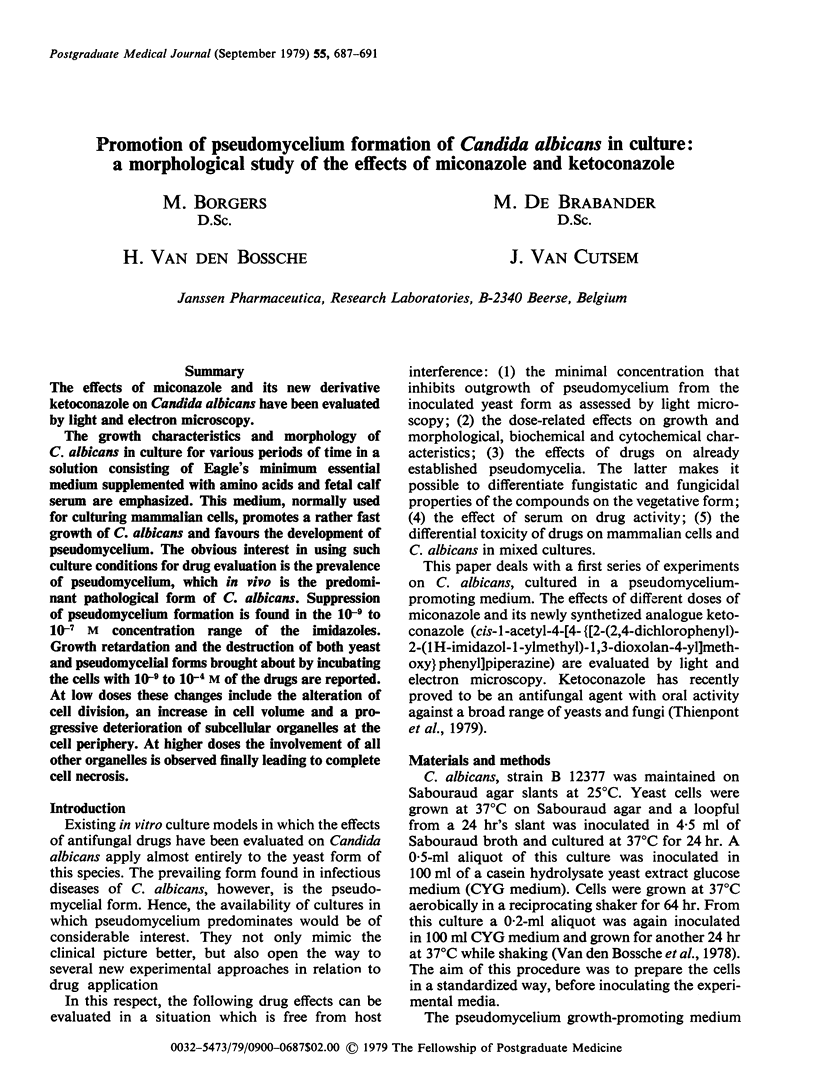
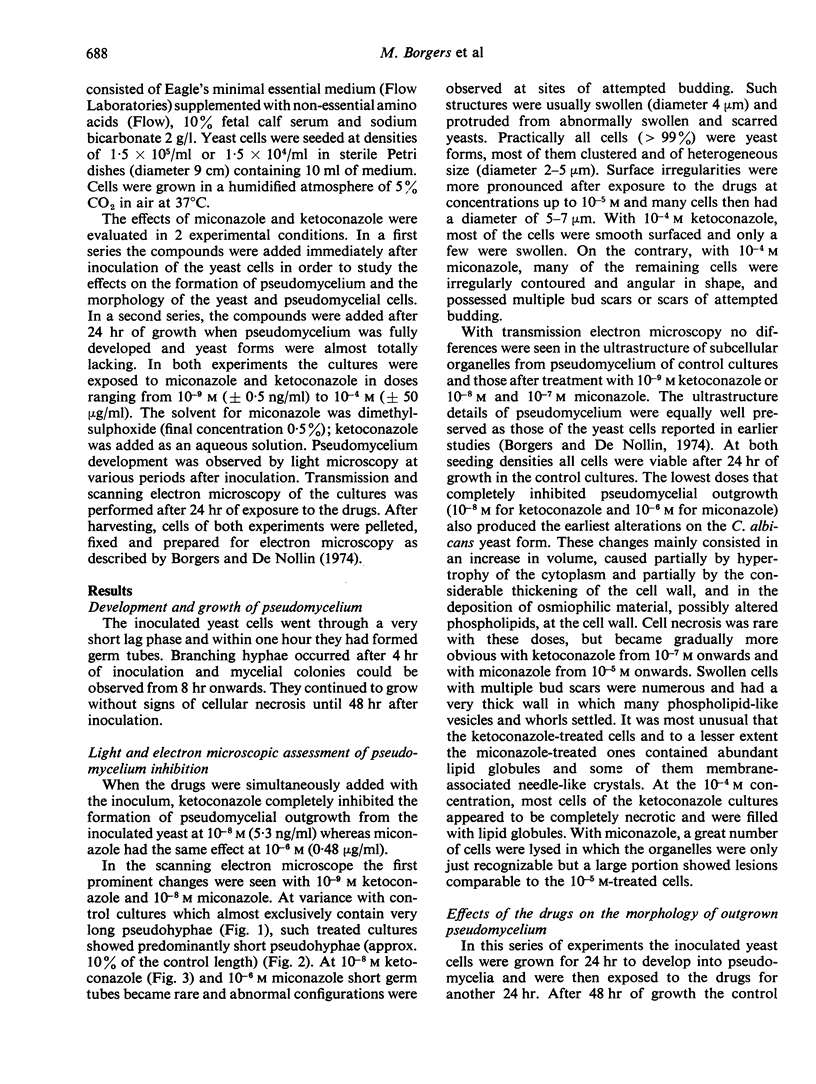
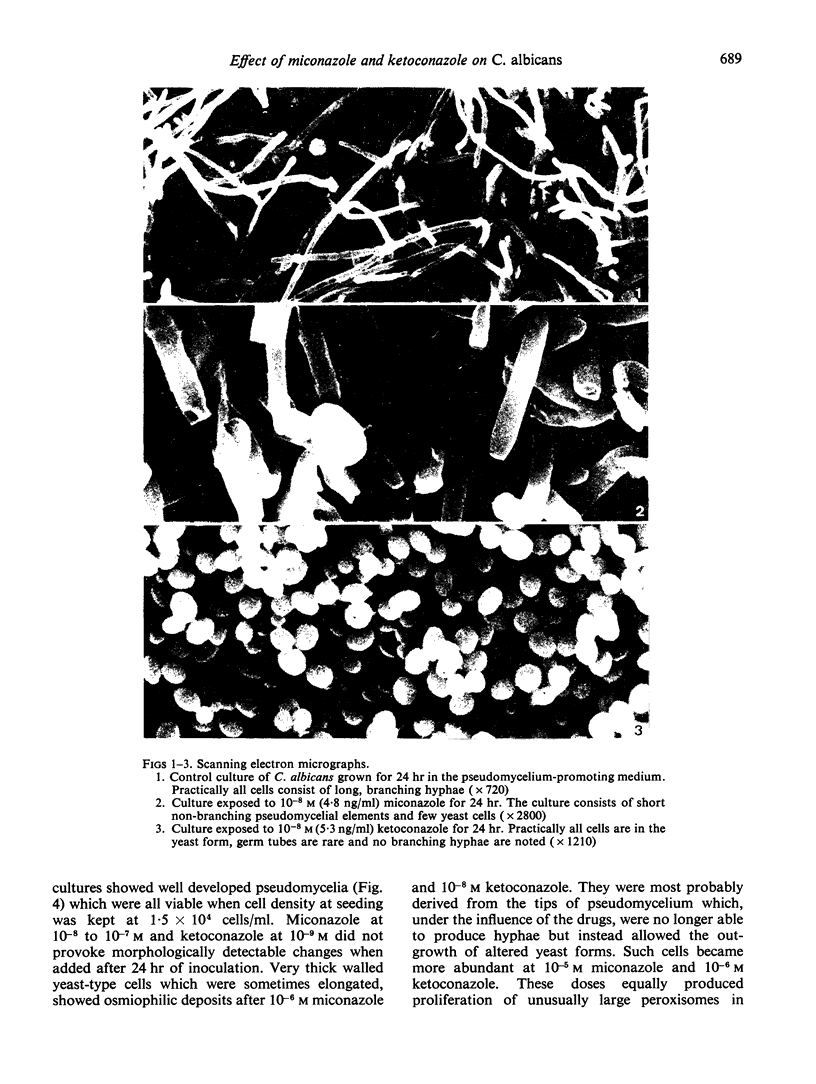
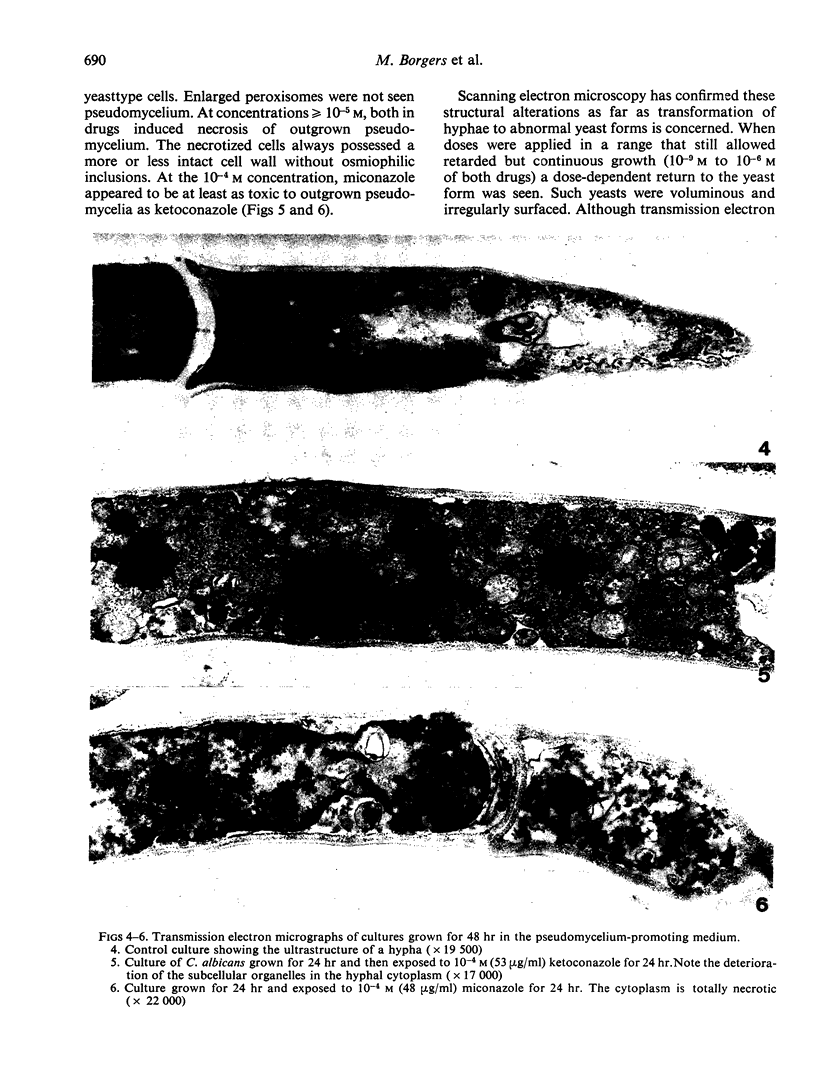
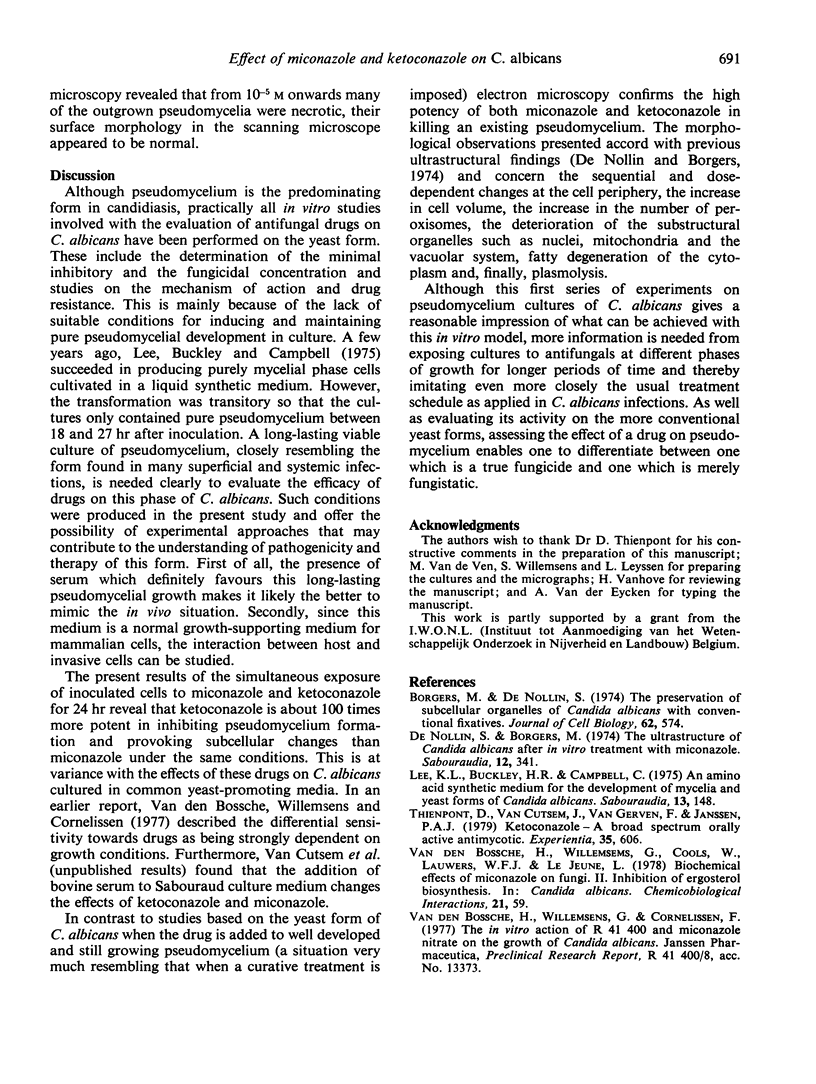
Images in this article
Selected References
These references are in PubMed. This may not be the complete list of references from this article.
- Borgers M., De Nollin S. The preservation of subcellular organelles of Candida albicans with conventional fixatives. J Cell Biol. 1974 Aug;62(2):574–581. doi: 10.1083/jcb.62.2.574. [DOI] [PMC free article] [PubMed] [Google Scholar]
- De Nollin S., Borgers M. The ultrastructure of Candida albicans after in vitro treatment with miconazole. Sabouraudia. 1974 Nov;12(3):341–351. [PubMed] [Google Scholar]
- Lee K. L., Buckley H. R., Campbell C. C. An amino acid liquid synthetic medium for the development of mycelial and yeast forms of Candida Albicans. Sabouraudia. 1975 Jul;13(2):148–153. doi: 10.1080/00362177585190271. [DOI] [PubMed] [Google Scholar]
- Thienpont D., Van Cutsem J., Van Gerven F., Heeres J., Janssen P. A. Ketoconazole -- a new broad spectrum orally active antimycotic. Experientia. 1979 May 15;35(5):606–607. doi: 10.1007/BF01960348. [DOI] [PubMed] [Google Scholar]
- van den Bossche H., Willemsens G., Cools W., Lauwers W. F., Le Jeune L. Biochemical effects of miconazole on fungi. II. Inhibition of ergosterol biosynthesis in Candida albicans. Chem Biol Interact. 1978 Apr;21(1):59–78. doi: 10.1016/0009-2797(78)90068-6. [DOI] [PubMed] [Google Scholar]



